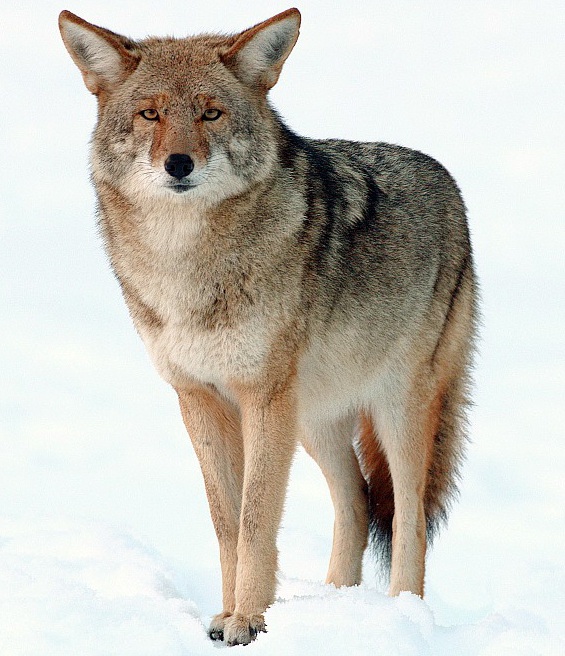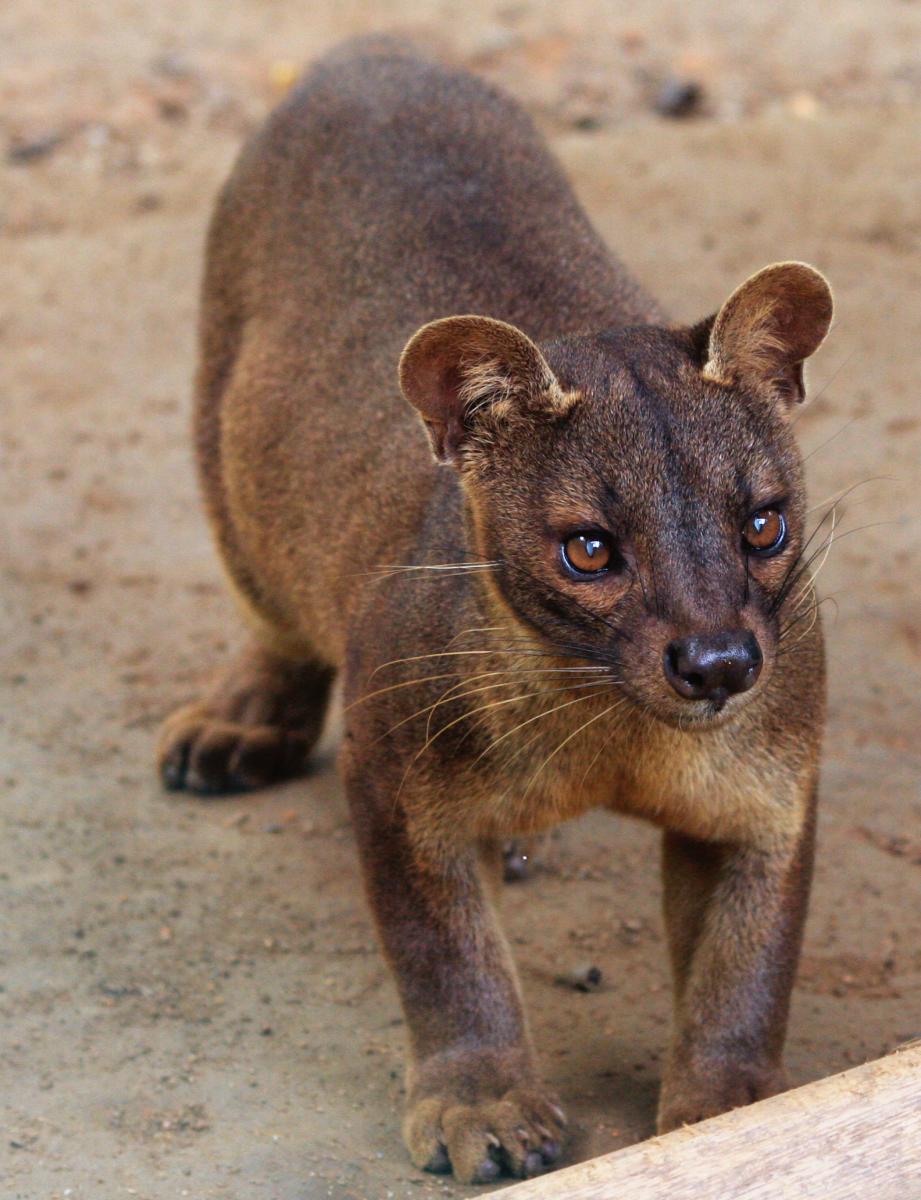What is an apex predator?
Submitted by editor on 10 March 2015.
Always wondered about the apex predator? Read the Early View paper in Oikos "What is an apex predator?" by Arian D. Wallasch and co-workers. Below is the author's summary of the study:
What is the difference between a dingo and fox?
We had been counting animal tracks on the sand dunes of an Australian desert, paying particular attention to the tracks of dingoes (Canis dingo) and red foxes (Vulpes vulpes). We were finding that here, like elsewhere around the world; persecution of an apex predator (the dingo) was leading to mesopredator release (of the fox) and the loss of biodiversity. As we were examining the tracks of foxes and dingoes it suddenly seemed odd that these two canids, with such similar paw-prints and histories, could have such contrasting ecological effects.
Both canids arrived in Australia as ‘migrants’, and they are the largest mammalian terrestrial predators of Australia (the dingo is larger and arrived earlier). Their ecological influence however has been distinctly different: the fox is considered an ecological ‘villain’ and the dingo is rapidly gaining a reputation as a ‘savior’. What is the difference between a dingo and a fox, or for that matter between any two predators?


(1) Dingo image by author (Arian Wallach) & (2) Fox image courtesy of Les Peters
Is the key in kilos?
One possibility we considered is that size may be the key. Small predators, like foxes, live among larger predators that kill and sometimes eat them, while large predators, like dingoes, are unlikely to be regulated by an even larger predator. As a result, large predators may have adapted traits that limit their own densities.
We set out to test the hypothesis that what distinguishes mesopredators from apex predators is the source of population control: smaller predators are extrinsically regulated (by large predators), while large predators manage their own densities. If this is so, we could expect to find a threshold weight at which some key life-history parameters shift.
We sifted through encyclopedias and databases to compile a dataset of life-history traits of 121 species of terrestrial and semi-terrestrial members of the Carnivora. We focused on traits that are likely to contribute to self-regulation, such as slow maturation, female reproductive suppression and infanticide. We found that carnivores larger than 13-16kg (average weight), or 34kg (upper limit weight), have life-history traits that slow population growth. This is roughly the size of an Asiatic golden cat, considered by those who live amongst them as deserving of apex predator status:
“People in Southeast Asia associate the golden cat with tigers and leopards. In Thailand [their name means] “fire tiger”, and the forest people believe [they are] the masters of all cats. The Karen, a local tribe, believe that carrying a single hair of the golden cat on your person will keep tigers away… [and in China] they are thought to be a kind of leopard.” From Wild Cats of the World by Mel and Fiona Sunquist

"Asian Golden cat" by Karen Stout - originally posted to Flickr as Asian Golden cat. Licensed under CC BY-SA 2.0 via Wikimedia Commons - http://commons.wikimedia.org/wiki/File:Asian_Golden_cat.jpg#mediaviewer/...
The threshold
Our analysis suggests that predator status is generally fixed, and that several apex predators can coexist within a single ecosystem. Thus, wolves (C. lupus) remain apex predators in the presence of larger predators such as tigers (Panthera tigris). Similarly, although previous studies have placed the coyote (C. latrans) in the mesopredator group when in the presence of wolves, our analysis clarifies that the coyote is a self-regulating apex predator.

Coyote by Yathin S Krishnappa (Own work) [CC BY-SA 3.0 (http://creativecommons.org/licenses/by-sa/3.0)], via Wikimedia Commons
The precise location of the threshold weight however remains somewhat ambiguous, and can vary depending on the variable and taxonomic family. In our study, the threshold mass was strongly influenced by three families that contributed the highest number of species: the canids, felids and mustelids. Defining a threshold mass at the Order level was necessary in order to obtain a sufficient sample size, but it may have obscured differences between families. For example, the ≤12 kg fossa (Cryptoprocta ferox) is the largest member of the Eupleridae and Madagascar’s largest carnivore, and they shares common traits with apex carnivores.

"Cryptoprocta ferox" by Chad Teer - originally posted to Flickr as [1]. Licensed under CC BY 2.0 via Wikimedia Commons - http://commons.wikimedia.org/wiki/File:Cryptoprocta_ferox.jpg#mediaviewe...
Self-regulation depends on social stability
Importantly, studies documenting self-regulation in large carnivores have shown that the expression of self-regulation traits is dependent upon a condition of social stability. For example, large canids have complex social structures that limit population density, and killing them can cause their population to increase. Our study suggests that the world’s apex predators do not require the aid of human ‘wildlife managers’ with guns to keep their densities under the control.

Dingo family courtesy of Jennifer Parkhurst
And what about us?
As the study progressed it became inevitable to wonder where humans fit into this picture. Are we mesopredators, somehow bereft of an apex predator to keep us in line? As the comedian Louie CK famously said: “we got out of the food chain”. Human population growth rate and resource extraction can easily be compared to a classic case of mesopredator release (or perhaps ‘mesopredator explosion’).
But our reflections suggested yet another possibility. Perhaps we do belong with the group of self-regulating apex predators, but our Malthusian population growth is a result of social disruption. Learning from apex predators, we can conclude that promoting peace is the way to achieving a sustainable human population.